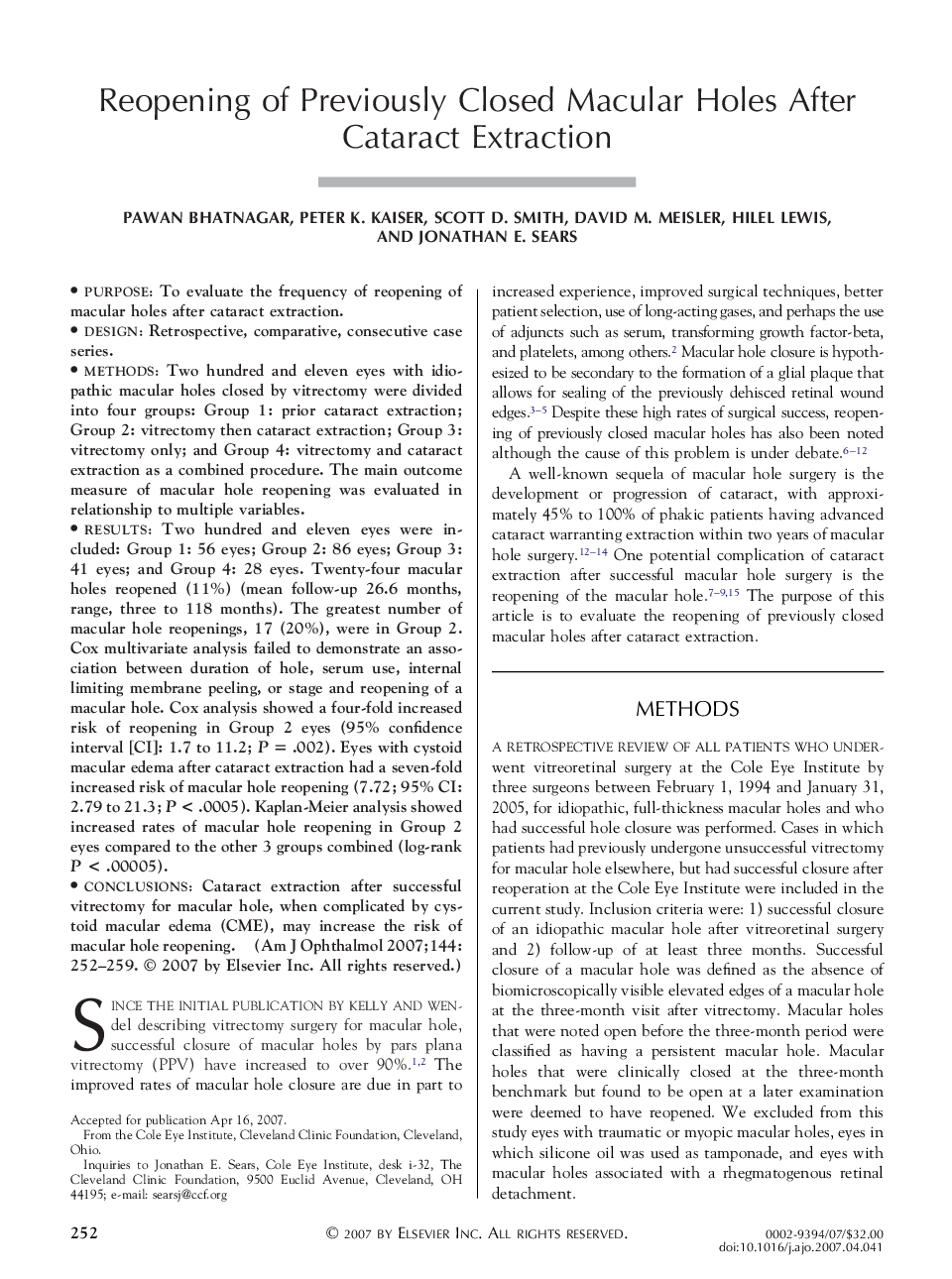| Article ID | Journal | Published Year | Pages | File Type |
|---|---|---|---|---|
| 4005894 | American Journal of Ophthalmology | 2007 | 8 Pages |
PurposeTo evaluate the frequency of reopening of macular holes after cataract extraction.DesignRetrospective, comparative, consecutive case series.MethodsTwo hundred and eleven eyes with idiopathic macular holes closed by vitrectomy were divided into four groups: Group 1: prior cataract extraction; Group 2: vitrectomy then cataract extraction; Group 3: vitrectomy only; and Group 4: vitrectomy and cataract extraction as a combined procedure. The main outcome measure of macular hole reopening was evaluated in relationship to multiple variables.ResultsTwo hundred and eleven eyes were included: Group 1: 56 eyes; Group 2: 86 eyes; Group 3: 41 eyes; and Group 4: 28 eyes. Twenty-four macular holes reopened (11%) (mean follow-up 26.6 months, range, three to 118 months). The greatest number of macular hole reopenings, 17 (20%), were in Group 2. Cox multivariate analysis failed to demonstrate an association between duration of hole, serum use, internal limiting membrane peeling, or stage and reopening of a macular hole. Cox analysis showed a four-fold increased risk of reopening in Group 2 eyes (95% confidence interval [CI]: 1.7 to 11.2; P = .002). Eyes with cystoid macular edema after cataract extraction had a seven-fold increased risk of macular hole reopening (7.72; 95% CI: 2.79 to 21.3; P < .0005). Kaplan-Meier analysis showed increased rates of macular hole reopening in Group 2 eyes compared to the other 3 groups combined (log-rank P < .00005).ConclusionsCataract extraction after successful vitrectomy for macular hole, when complicated by cystoid macular edema (CME), may increase the risk of macular hole reopening.
